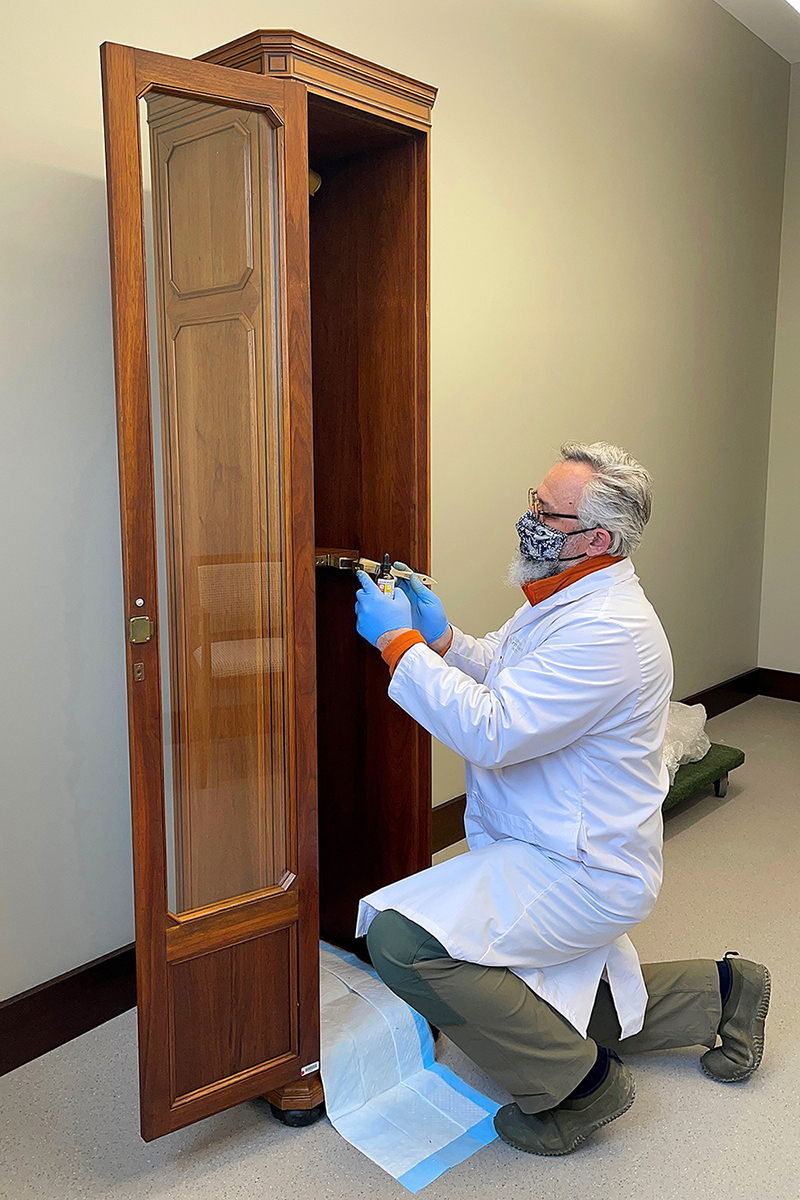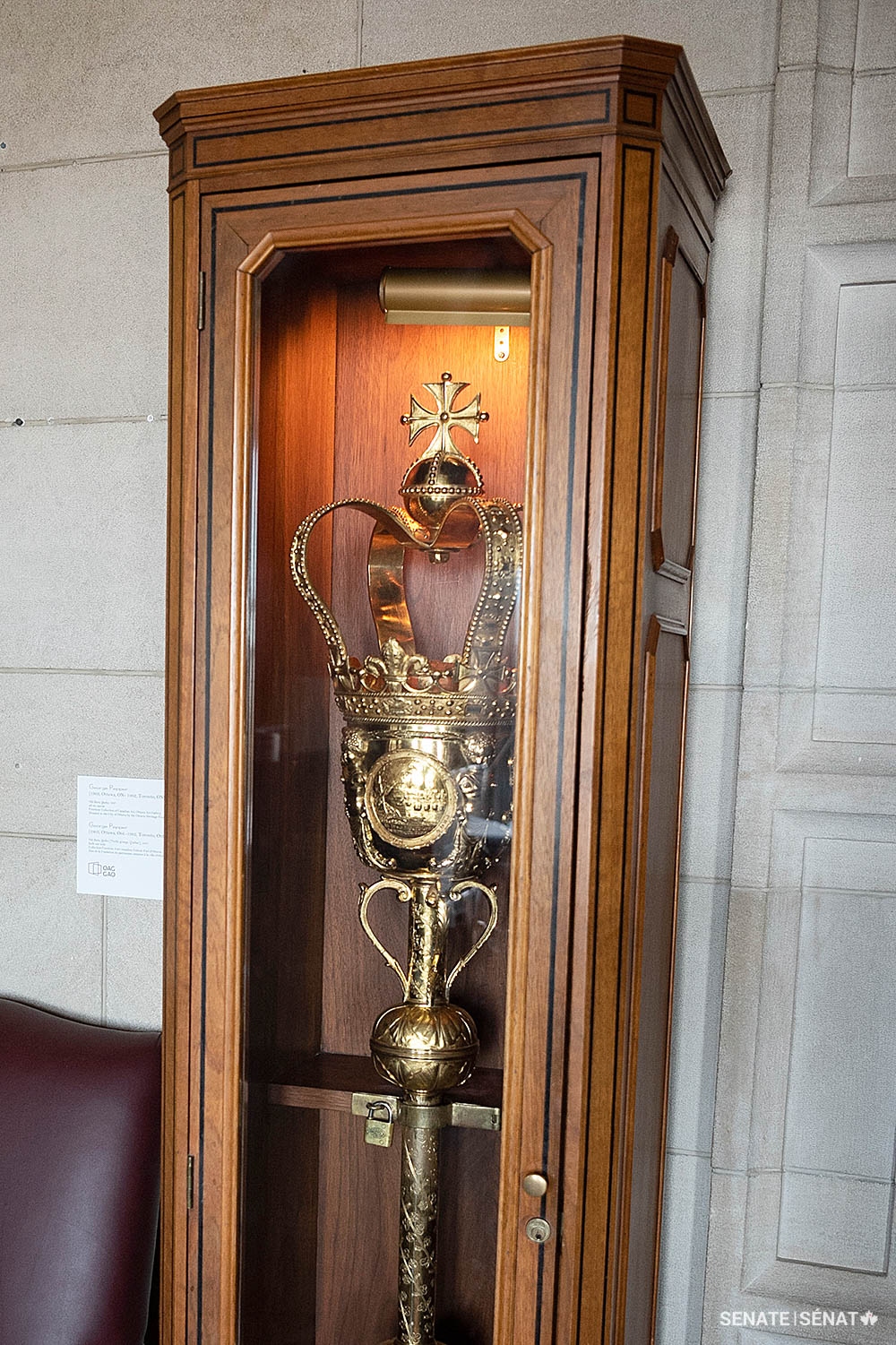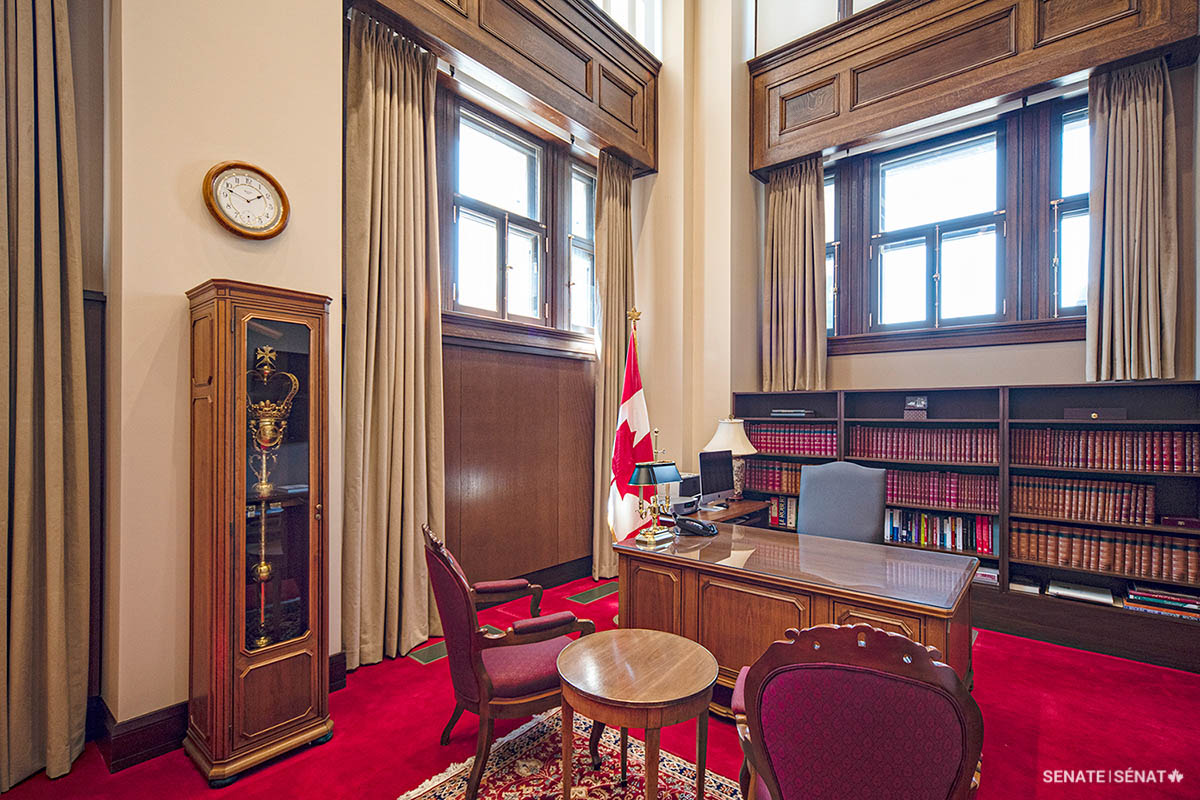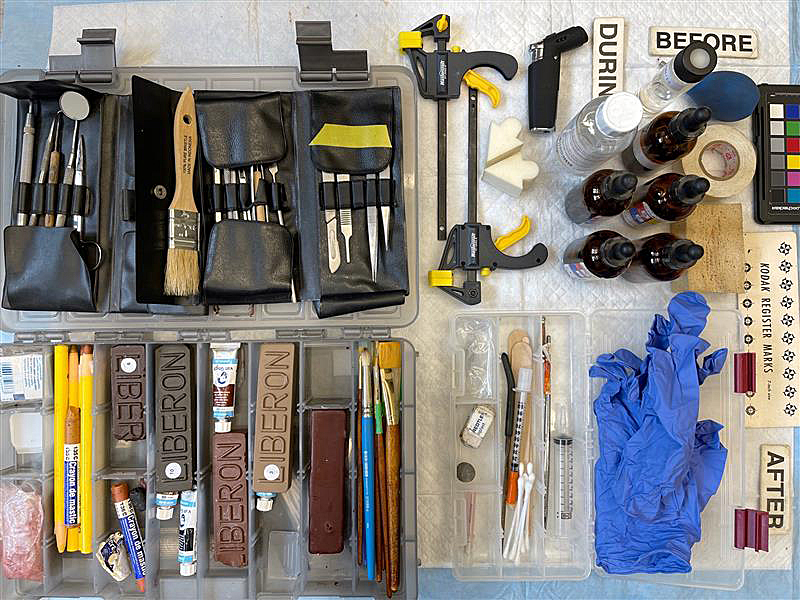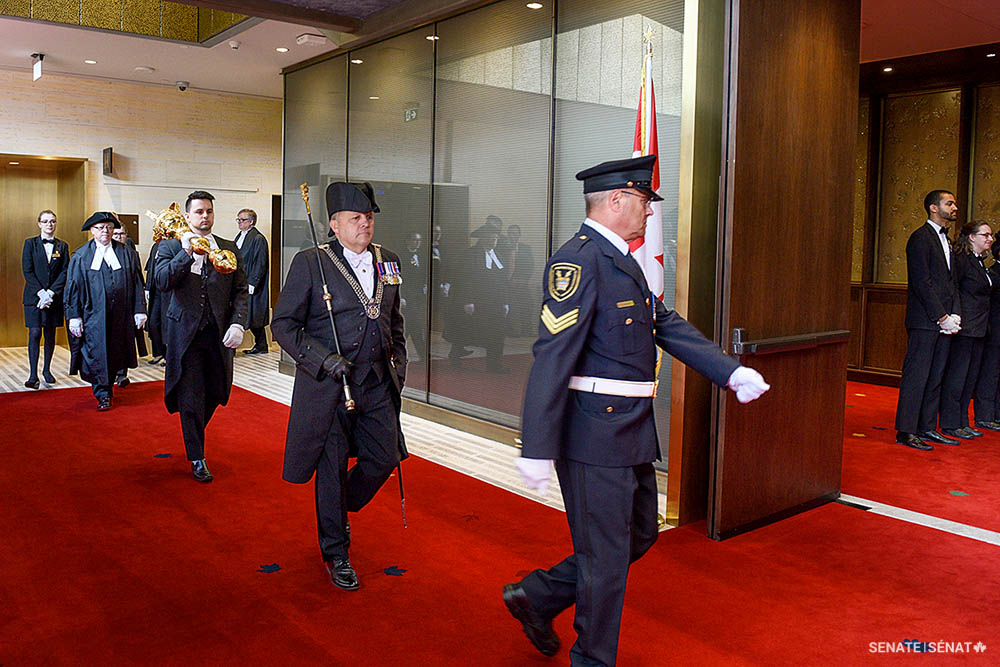Restored Senate Mace cabinet shines with its original lustre
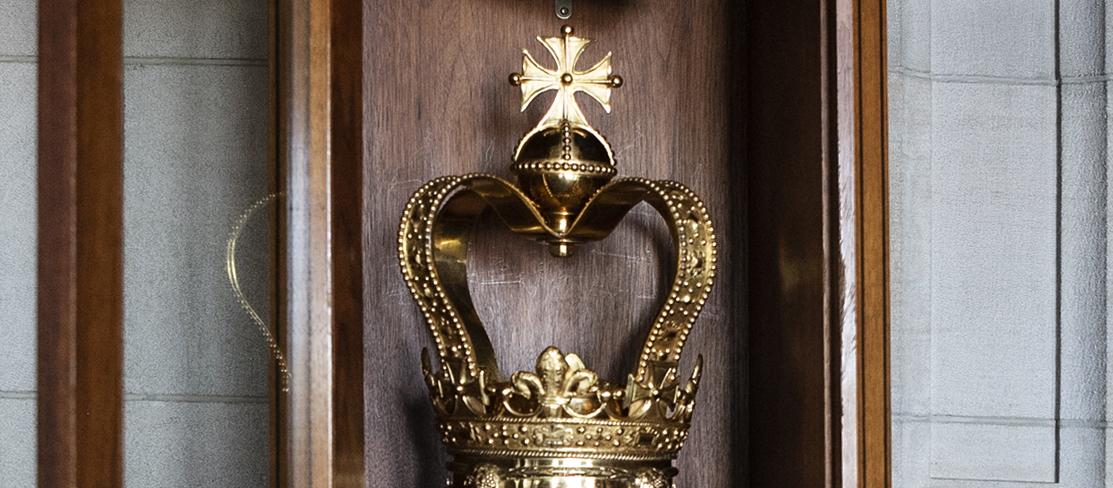
In February 2019, the Senate moved to the Senate of Canada Building, a former train station built in 1912. The Senate will occupy this temporary location while Parliament’s Centre Block — the Senate’s permanent home — is rehabilitated.
Although Centre Block is shuttered for rehabilitation work, Canadians can still experience its art and architecture through the Senate’s immersive virtual tour.
It’s tough when you do your share of the heavy lifting but get none of the glory.
Take the Senate Mace cabinet, for example.
This two-metre walnut-wood case houses the Senate’s Mace when it isn’t in the Chamber.

Most Parliament Hill watchers know about the Mace. It’s the 1.6-metre gold-plated brass staff that precedes the Speaker into the Chamber to open each Senate sitting.
The Mace is the embodiment of the institution’s mandate and history, decorated with emblems representing Canada’s connections to France, Ireland, England and Scotland as well as the Crown. It symbolizes the authority granted by the Queen to the Senate; without it, the Senate cannot meet.
While the Mace gets the spotlight when the Senate sits, the Mace case works quietly, with little fanfare, mornings, afternoons, evenings, seven days a week.
But earlier this year, the case got some well-earned attention from conservator Alexander Gabov, who painstakingly restored the cabinet over four days in the winter
“It is such a remarkable piece. It very discretely protects and enhances the appearance of the Mace,” said Mr. Gabov, who is based in Gananoque, Ontario. “It’s restrained; it never overshadows the Mace.”
For all its restraint, the cabinet’s craftsmanship is exquisite: ebony-inlaid walnut-wood panels, a 1.6-metre glass pane, copper-alloy knobs plus hinges and brackets to support the Mace — all of them original.
The cabinet was designed by Centre Block’s chief architect, John A. Pearson, whose painstaking attention to every detail of Centre Block’s design was legendary. It was manufactured in the 1920s by Montréal’s Castle & Sons, one of Canada’s most sought-after furniture makers and one of the main suppliers during the reconstruction of Parliament Hill’s Centre Block.
The case is in remarkable condition, considering its age. It stands in the Speaker of the Senate’s office in the Senate of Canada Building but resided in Centre Block until 2019, when rehabilitation work on the building got underway.
Mr. Gabov has been a conservator for over 20 years, launching his own restoration firm — Conservation of Sculptures, Monuments and Objects — after completing a Master of Art Conservation at Queen’s University in 2000.
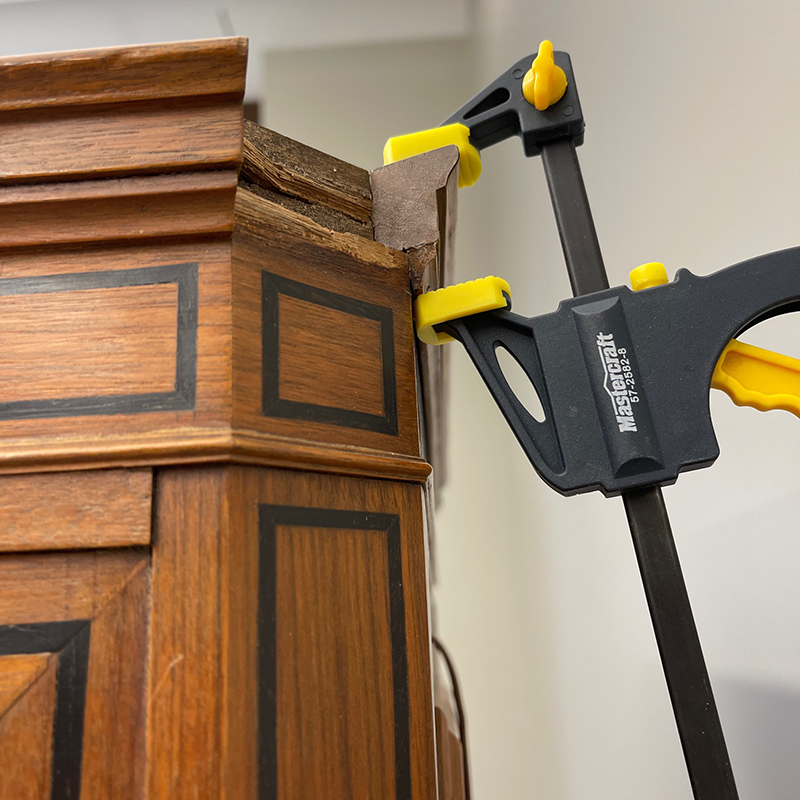
Mr. Gabov was careful to treat the Mace case as a one-of-a-kind piece when deciding whether to intervene or not.
“You have to respect the original and you have to decide how much or how little you do in terms of interventions to maintain it,” he said.
He repaired wobbly brackets and mouldings, reglued loose sections of trim, then cleaned up spots of rust and corrosion on the copper-alloy fixtures, refinishing the hardware with a clear acrylic sealant.
He used coloured wax to smooth over tiny surface cracks and visible seams where wooden panels had separated.
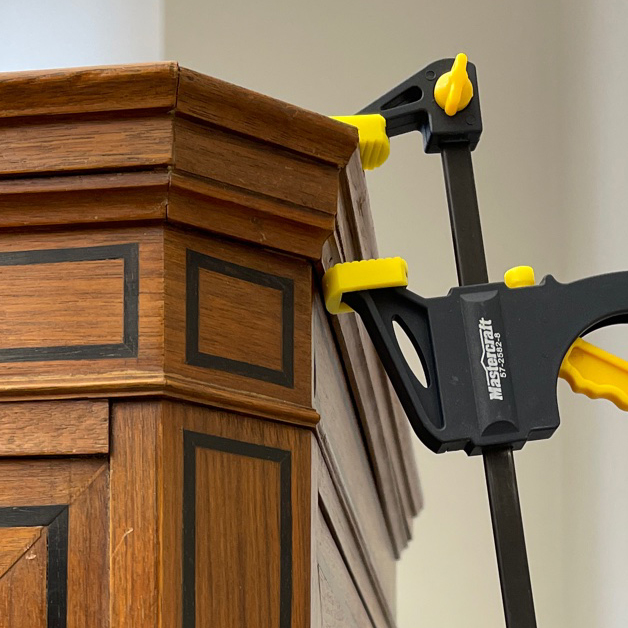
“Wax is soft and pliable so it can move as the wood contracts and expands. Wax is natural and, most importantly, reversible. Everything we use is 100% reversible.”
After running tests to verify that the cabinet had never been refinished, Mr. Gabov made the decision not to resurface the piece.
“It was important to faithfully preserve anything original and the finish was in excellent condition,” he said.
Mr. Gabov is confident that this subtle, restrained approach to restoration was the right one.
“I don’t want anyone to say, ‘Wow, that’s a great job! Look at the change!’ If we’ve done our job well, most people would not even know we’d been there.”
